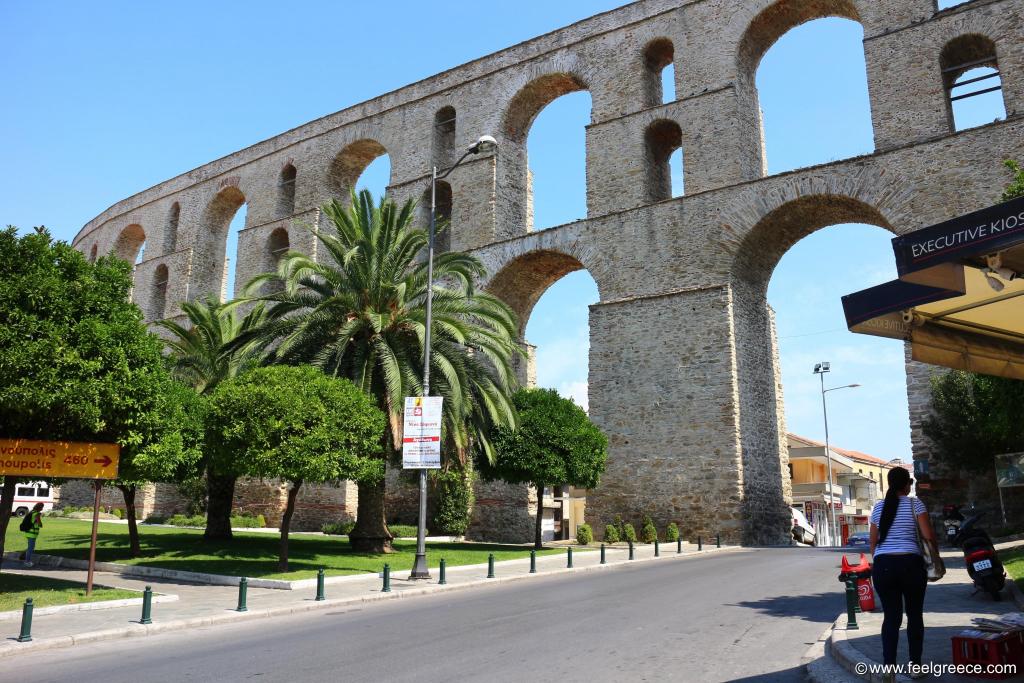Kamares Medieval Aqueduct

Kamares (meaning "arches" in Greek) is a Medieval aqueduct which in the past transported water over 6 kilometers to the walled city of Kavala. The water came from the Pangaeus mountain springs and flew via open channel to the top of the aqueduct. There are cisterns at both ends of Kamares which once collected and cleaned the water through overflowing. The water supplied public fountains, few public building (like the hamam) and some private houses. The most impressive part of the aqueduct is near the Old Town of Kavala - a bridge-like structure of arches that spans across 280 meters and up to 28 meters in height.
The aqueduct has Roman origin visible from the coarse bricks in the structure foundations. In 14th century it was incorporated into Byzantine barrier wall that protected the city and controlled the West-East traffic. In 16th century, during the reign of Suleiman the Magnificent, the structure was remodeled to its current shape. The barrier wall was replaced with arched aqueduct from local granite stone and lime brick elements. The aqueduct was actively used until 1920. In 2008 restoration works were carried out.
In current days busy road comes from the port and passes under the Kamares arches. Walking alleys start from the aqueduct and run into the old city up to the Kavala fortress. From the castle there is magnificent view to the city and the whole aqueduct.
Photos
Address and contacts
highlights: impressive water supply facility for the town acropolis, historic sight in Kavala, Kavala Region, Greece





